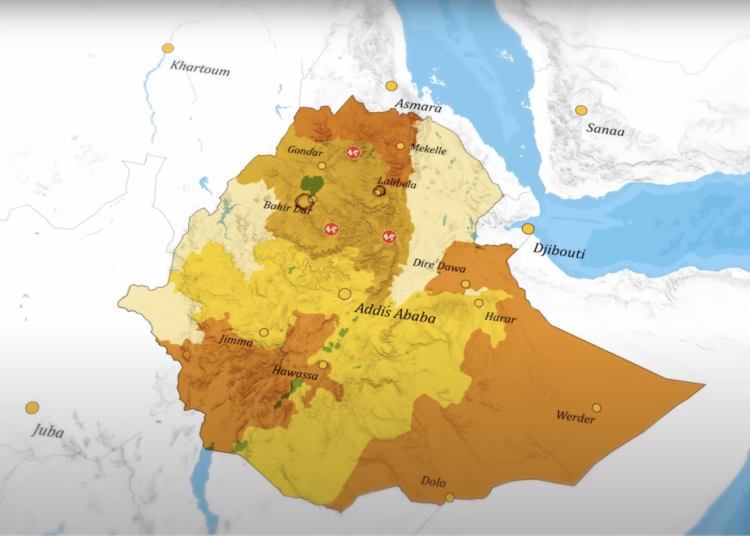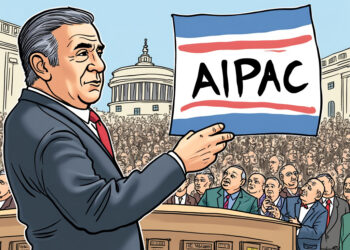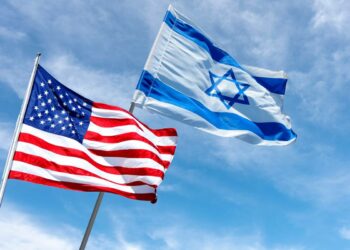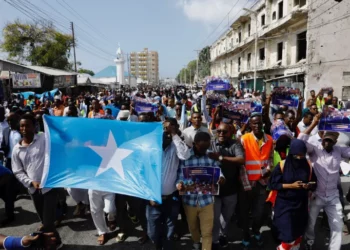Introduction:
Ethiopia, a nation with a rich history and diverse ethnic tapestry, is facing a growing rebellion that threatens to destabilize not only the country but potentially the entire African continent. The emergence of the Amhara militia, known as Fano, and its recent aggressive actions have underscored the deep-rooted ethnic tensions that plague Ethiopia.
The Rise of the Fano Militia:
In early August, the Fano militia, deeply entrenched in the Amhara region’s political landscape, gained control over several towns, cities, and even an airport. Their penetration into major cities like Gondar and Bahirdar signaled a significant escalation. However, the Ethiopian federal military’s subsequent counteractions have pushed Fano into the highlands, where they have now resorted to guerrilla warfare tactics.
Ethnic Tensions at the Heart of Conflict:
The Fano movement is a manifestation of the Amhara people’s political discontent, representing nearly a third of Ethiopia’s population. Feeling betrayed and persecuted under Prime Minister Abiy Ahmed’s leadership, which they perceive as dominated by the Oromo elite, the Amhara community’s unrest has reached a boiling point. Meanwhile, the Oromo people, Ethiopia’s largest ethnic group, are engaged in their own power struggle, further intensifying the national crisis.
A Fragile Nation in Recovery:
Still reeling from the devastating Tigray War, which concluded less than a year ago, Ethiopia’s national government is struggling to maintain order. The fraying public safety situation, particularly along the Oromia and Amhara border, is a worrying sign of potential broader conflict.
A Mosaic of Ethnicities and the Struggle for Power:
Ethiopia’s diverse makeup, consisting of 11 ethnic regions and up to 80 distinct ethnic groups, has been both a source of cultural richness and a cause of strife. The two largest ethnic groups, the Oromos (about 32%) and the Amharas (about 28%), along with significant populations like the Tigrayans and Somalis, each vie for power and representation. This complex ethno-religious landscape has historically been a breeding ground for insurgencies and communal violence.
Historical Roots of the Current Conflict:
Ethiopia’s volatile history is marked by power struggles and ethnic tensions. The Tigray-dominated government, which controlled Ethiopian politics for nearly three decades since 1991, eventually gave way to a new national system designed to appease major ethnic groups. However, this system led to disproportionate representation and a feeling of marginalization among many communities.
The Reign of Abiy Ahmed:
Abiy Ahmed’s ascent to power in 2018 brought initial hope with significant reforms, including political liberalization and a peace deal with Eritrea. However, his efforts to centralize power and reduce Tigray’s influence led to isolation and eventual conflict with the Tigray elite. This conflict, while initially political, soon took on an ethnic dimension, escalating into widespread violence and human rights abuses.
The Amhara and Tigray Tension:
The involvement of the Amhara militia, Fano, in the Tigray conflict, is not merely a political alliance but also deeply personal. The Amhara region, which borders the Tigray war zone, has suffered significant civilian casualties. Fano’s resentment towards the Tigrayans is profound, and their refusal to disarm or stop fighting, even after the federal government and Tigray agreed to a ceasefire, signals a deepening crisis.
The West Tigray Dispute:
Central to Fano’s grievance is the occupation of western Tigray, a region they claim but is under Tigray control. The peace talks excluded Fano, leading to heightened tensions as the Amhara community fears losing their territorial claims in any deal between the federal government and Tigray.
The Oromo Factor and the Future of Addis Ababa:
Adding to the complexity, Prime Minister Abiy Ahmed’s Oromo heritage and his perceived favoritism towards Oromos have intensified suspicions among the Amharas. Incidents of communal violence, like the massacre in Gimbi County exacerbated these ethnic divides. Fano’s refusal to disarm, coupled with their growing popularity among the Amhara people, poses a significant challenge to the federal government’s efforts to maintain control.
Geopolitical Quagmire and Regional Implications:
The involvement of neighboring countries, including Sudan and Eritrea, could further complicate the conflict. Sudanese military officers’ potential to train and arm militias like Fano and Eritrea’s support for Fano during the Tigray War add layers of complexity, turning a national crisis into a regional conflict.
Conclusion:
Ethiopia is at a critical juncture, facing the daunting task of reconciling its diverse ethnic groups while maintaining national unity. The government’s response to the Amhara rebellion, ongoing tensions with Tigray, and potential external involvement will determine not just Ethiopia’s fate but also the stability of the Horn of Africa. Without effective political foresight and inclusive dialogue, Ethiopia risks descending into a conflict that could be the deadliest the continent has seen in over a century.














